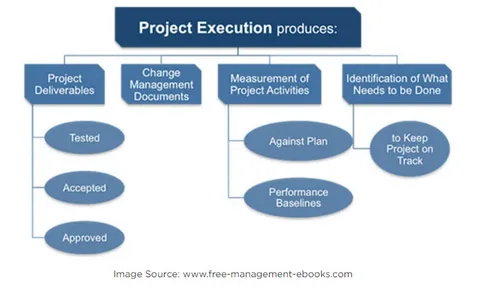Live productions, whether concerts, corporate events, or theater performances, are exhilarating experiences that require meticulous planning and execution. For beginners, the process can seem overwhelming, but with the right approach, you can create a memorable event. This guide covers the essentials of planning, choosing the right gear, and executing a flawless live production, optimized for success.
Step 1: Planning Your Live Production
Effective planning is the backbone of any successful live event. Start by defining your event’s purpose and audience. Are you hosting a music festival, a corporate seminar, or a community theater show? Understanding your goals helps shape every decision, from venue selection to budget allocation.
Set a Realistic Budget
Your budget determines the scale of your production. Account for major expenses like venue rental, equipment, staffing, and marketing. Allocate a contingency fund (10-15% of your budget) for unexpected costs. Prioritize spending on elements that directly impact audience experience, such as sound and visuals.
Choose the Right Venue
The venue should align with your event’s size and vibe. Consider capacity, accessibility, and technical capabilities like power supply and stage space. Visit the venue beforehand to assess its suitability and discuss requirements with the management.
Create a Detailed Timeline
A production timeline keeps everyone on track. Break down tasks into pre-event, event day, and post-event phases. Include milestones like booking vendors, finalizing the run-of-show, and conducting rehearsals. Use project management tools like Trello or Asana to stay organized.
Assemble Your Team
A reliable team is crucial. Key roles include a stage manager, sound engineer, lighting designer, and event coordinator. For smaller events, some roles may overlap, but ensure everyone understands their responsibilities. Clear communication prevents last-minute chaos.
Step 2: Choosing the Right Gear for Your Production
The right equipment elevates your event’s quality. Beginners often overestimate or underestimate their gear needs, so here’s a breakdown of essentials.
Audio Equipment
Clear sound is non-negotiable. Invest in a quality PA system, microphones (wired or wireless, depending on mobility needs), and a mixing console. Test audio levels during rehearsals to avoid feedback or distortion. If your budget is tight, consider renting equipment instead of purchasing.
Lighting Equipment
Lighting sets the mood. Basic setups include stage washes, spotlights, and ambient lighting. For dynamic effects, explore intelligent lighting like moving heads. Ensure your lighting rig is compatible with the venue’s power and rigging capabilities.
Visual Displays
For events requiring impactful visuals, consider an LED wall rental. These high-resolution screens are perfect for displaying presentations, live feeds, or immersive graphics. They’re versatile, scalable, and ideal for engaging audiences at conferences or concerts. Renting an LED wall is cost-effective for one-time events, as it eliminates maintenance and storage costs.
Staging and Rigging
Your stage setup depends on the event type. For concerts, prioritize sturdy platforms and trussing for lighting and speakers. For corporate events, a clean, modular stage with branding works best. Ensure all rigging complies with safety regulations.
Power and Connectivity
Power failures can derail your event. Confirm the venue’s power capacity and have backup generators on standby. For internet-dependent events (e.g., live streaming), secure reliable Wi-Fi or hardwired connections.
Rent vs. Buy
For beginners, renting gear is often smarter than buying. It reduces upfront costs and ensures access to modern equipment. Work with reputable rental companies and verify equipment condition before signing contracts.
Step 3: Executing Your Live Production
Execution day is where preparation meets action. Here’s how to ensure a smooth show.
Conduct Thorough Rehearsals
Rehearse every aspect of the event, from performer cues to technical transitions. Run through the full show at least once in the venue to identify issues. Time your run-of-show to avoid overruns.
Manage Technical Cues
Technical cues for audio, lighting, and visuals must be synchronized. Use cue sheets or software like QLab to coordinate transitions. Assign a stage manager to oversee cue execution and communicate with the crew via headsets.
Engage Your Audience
Audience experience is paramount. Ensure clear sightlines, comfortable seating, and timely starts. For interactive events, incorporate elements like live polls or Q&A sessions. Monitor audience reactions and adjust pacing if needed.
Handle Unexpected Issues
Even with planning, things can go wrong. Train your team to troubleshoot common issues, like audio dropouts or lighting malfunctions. Keep spare cables, batteries, and tools on hand. Stay calm and delegate tasks to resolve problems quickly.
Live Streaming Considerations
If streaming your event, test your setup rigorously. Use professional-grade cameras and streaming software like OBS. Ensure sufficient bandwidth and have a dedicated streaming coordinator to monitor quality.
Post-Event Wrap-Up
After the event, tie up loose ends. Collect feedback from attendees, performers, and crew to identify strengths and areas for improvement. Settle payments with vendors and return rented equipment promptly. Document your process to streamline future productions.
Conclusion
Producing a live event is a rewarding challenge that combines creativity and logistics. By planning meticulously, selecting the right gear, and executing with precision, beginners can deliver unforgettable experiences. Whether you’re renting an LED wall for stunning visuals or fine-tuning audio for crystal-clear sound, every detail matters. Start small, learn from each event, and build your confidence as a live production pro. With practice, you’ll master the art of bringing events to life

